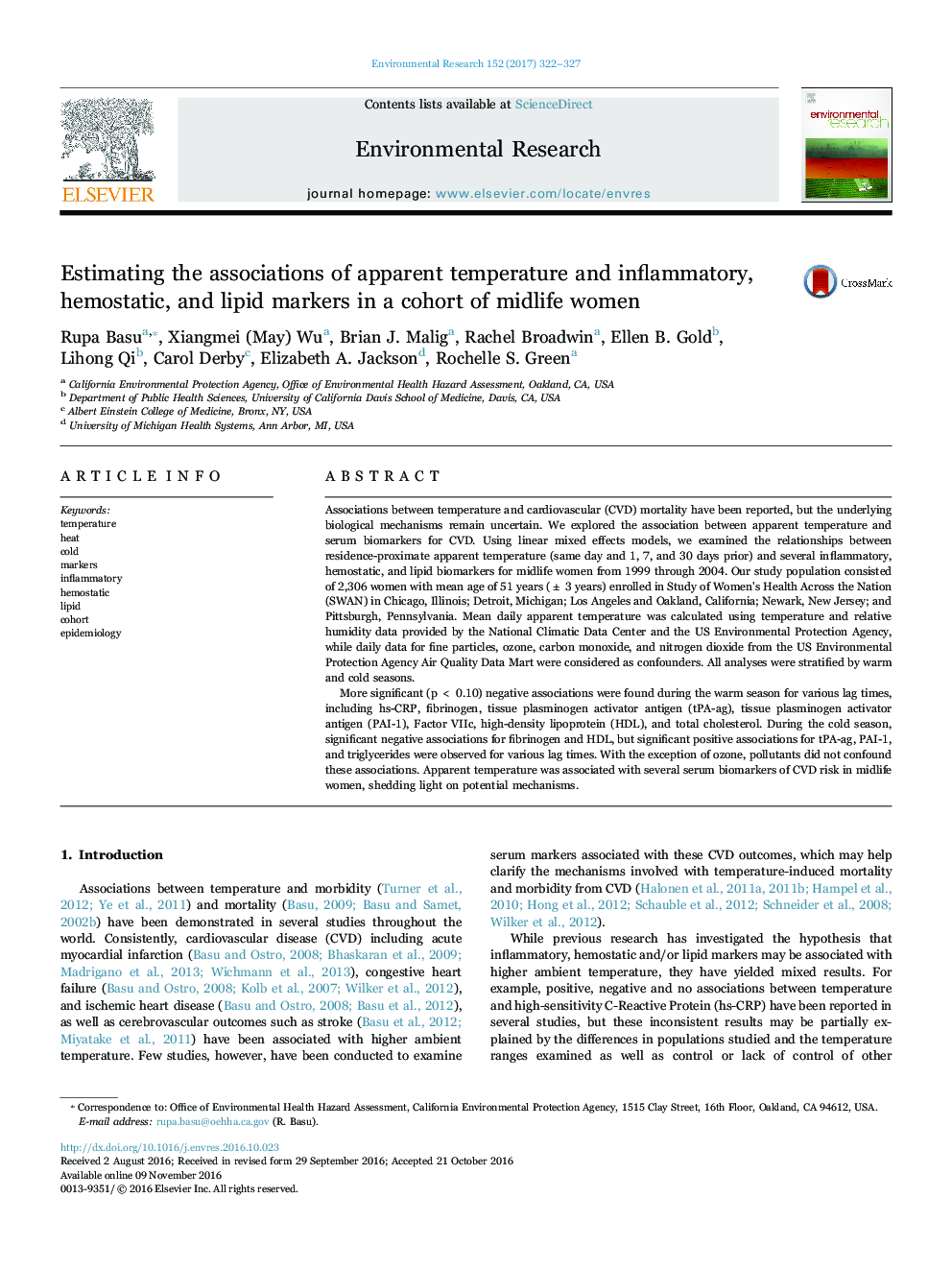| کد مقاله | کد نشریه | سال انتشار | مقاله انگلیسی | نسخه تمام متن |
|---|---|---|---|---|
| 6350767 | 1622551 | 2017 | 6 صفحه PDF | دانلود رایگان |
- Significant negative associations found during the warm season for various lag times.
- During the cold season, significant negative associations for fibrinogen and HDL.
- Positive associations for tPA, PAI-1, and triglycerides observed during cold season.
- Criteria air pollutants did not confound the associations observed.
- Results shed light on mechanisms between temperature and cardiovascular risk.
Associations between temperature and cardiovascular (CVD) mortality have been reported, but the underlying biological mechanisms remain uncertain. We explored the association between apparent temperature and serum biomarkers for CVD. Using linear mixed effects models, we examined the relationships between residence-proximate apparent temperature (same day and 1, 7, and 30 days prior) and several inflammatory, hemostatic, and lipid biomarkers for midlife women from 1999 through 2004. Our study population consisted of 2,306 women with mean age of 51 years (± 3 years) enrolled in Study of Women's Health Across the Nation (SWAN) in Chicago, Illinois; Detroit, Michigan; Los Angeles and Oakland, California; Newark, New Jersey; and Pittsburgh, Pennsylvania. Mean daily apparent temperature was calculated using temperature and relative humidity data provided by the National Climatic Data Center and the US Environmental Protection Agency, while daily data for fine particles, ozone, carbon monoxide, and nitrogen dioxide from the US Environmental Protection Agency Air Quality Data Mart were considered as confounders. All analyses were stratified by warm and cold seasons.More significant (p < 0.10) negative associations were found during the warm season for various lag times, including hs-CRP, fibrinogen, tissue plasminogen activator antigen (tPA-ag), tissue plasminogen activator antigen (PAI-1), Factor VIIc, high-density lipoprotein (HDL), and total cholesterol. During the cold season, significant negative associations for fibrinogen and HDL, but significant positive associations for tPA-ag, PAI-1, and triglycerides were observed for various lag times. With the exception of ozone, pollutants did not confound these associations. Apparent temperature was associated with several serum biomarkers of CVD risk in midlife women, shedding light on potential mechanisms.
Journal: Environmental Research - Volume 152, January 2017, Pages 322-327
